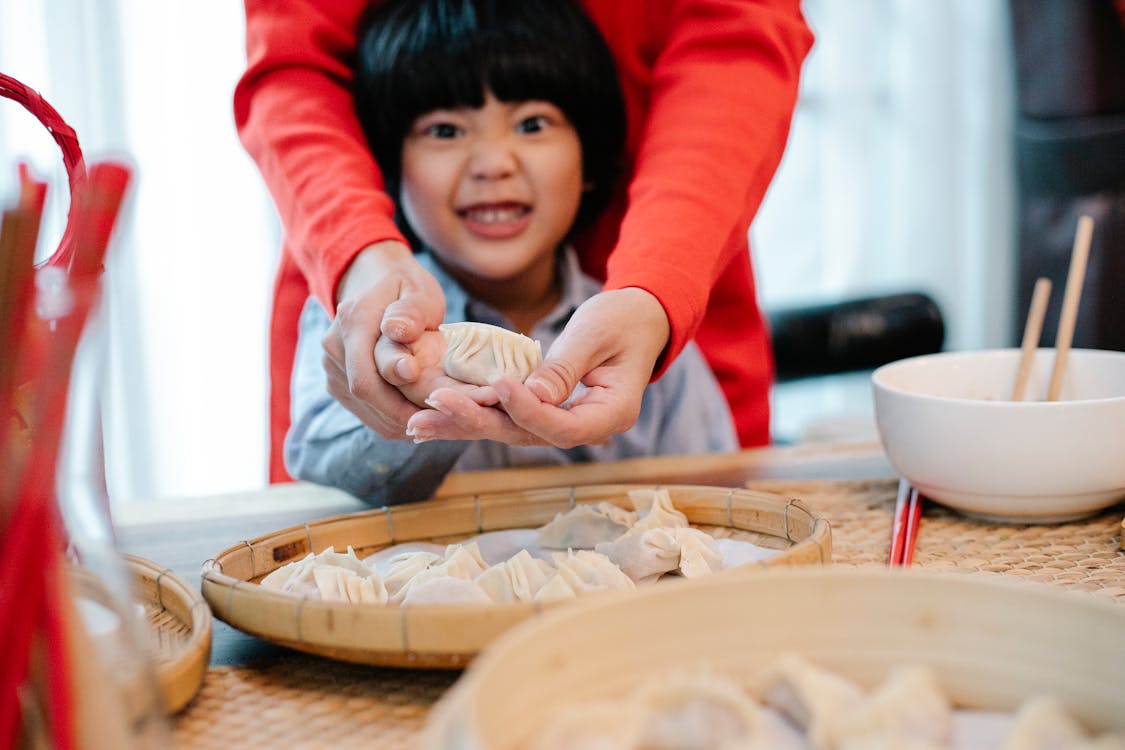Now the question comes how to introduce this peaceful environment into your daily routines? Is it possible to instill a love of learning in children at home? The answer is Yes! You can create a Montessori environment at your home. To know more, explore the below-mentioned points:
#1 Everything has a Place:
Children appreciate order. Assist your children in understanding where everything goes, and they will enjoy returning toys and clothing to their proper place. Your children will succeed if you set up your home environment properly.
- If you re-imagine the layout of your home, you’ll notice some simple changes, such as:
- Install hooks low on the wall for your children’s coats, hats, and other accessories.
- Stack a few small rugs and demonstrate how to use one for working with blocks, puzzles, or other activities. Toys tend to become strewn about the room if you don’t assist your child in keeping them contained.
- Arrange groups of toys on trays, such as blocks, beads, or flashcards. Teach your children to clean as they go, returning one tray to its proper location before retrieving another.
#2 Encourage Self-Motivation and Independence:
Adriane recalled a time when she was entertaining dinner guests. She forgot to give her young (Montessori-enrolled) children silverware somewhere during things. Without saying anything, the children quietly rose, opened the appropriate drawer, retrieved forks, and returned to the table. Her guests were astounded, remarking that their children usually screamed until Mommy got what they needed.
At-Home Suggestions:
- Clear out a lower cabinet or shelf for the kids’ dinnerware to be stored at their level.
- Teach children how to use tongs to serve themselves from a platter and how to use a napkin.
#3 Empower Your Kid:
Teach your children how to make their snacks. (Bonus: knowing how to prepare healthy snacks makes them more likely to eat them!) Demonstrate how to spread peanut butter on bread and how to cut a banana with a safe knife (like a cheese knife).
Allow your children to experiment with pouring water from a child-sized pitcher into a small cup. Allow them to use glass cups on occasion. Surprisingly, it isn’t as bad as it appears – it teaches cause and effect, and how to care for nice things.

At-Home tips:
- Messes will occur. Keep a stack of clean rags nearby for spills, and show them where to put dirty rags.
- Begin by pouring dry ingredients such as rice or beans. Pour the contents over a tray to catch any spills.
#4 Give Your Children the Tools They Need for Lifelong Success:
The air of mutual respect and courtesy that pervades a Montessori classroom is one of its most striking features. Teach your children how to greet visitors to their homes in a friendly manner. Show compassion and respond politely when someone addresses them. Also, demonstrate how to handle a cough or sneeze. Instruct them on how to push their chair back into the table properly, how to answer the phone, and how to avoid interrupting conversations.
#5 Let Your Child Do Some Stuff:
Children can do more than we realize, and they enjoy doing it. Young children are capable of dusting, matching socks, and even sweeping.
Encourage your child to take an active role in the upkeep of his home. Learning these practical life skills demonstrates to them that they are a valuable member of the household. Maintain a positive attitude toward housework. Cleaning should be associated with bringing about a sense of completion and order, rather than being associated with dreaded work. Children of all ages want to spend time with you. Rather than sending children off to clean their room, try to involve them in whatever task you’re working on.

At-Home Tips
- Children learn best through repetition and practice. Each time, complete a cleaning task in the same order. Kids love setting up outdoor doll washing stations in the Montessori classroom, complete with water, a tub, shampoo, a washcloth, a towel, and clean clothes. They enjoy the methodical nature of caring for the “baby.”
- Mark off a small square-shaped area on your floor with tape. Teach your child to sweep dirt into the square with a child-sized broom. The child can then sweep the debris into a dustpan.
#6 The Absorbent Mind:
Children learn through observation rather than being told how things work. Encourage your child to learn about the world through hands-on activities such as nature walks.
At-Home Suggestions:
- Set up a small basket in your home for your children to display the nature collection.
- Begin a garden with your child and share your love of science. Children grow blueberries, basil, lettuce, and flowers in the Montessori classroom.
#7 Encourage Learning:
The Montessori method’s goal is to encourage your child’s natural desire to learn. Here are a few simple ideas to get you started:
- When and wherever you can, read aloud. Set up a fun reading station with comfy pillows and a book basket.
- Introduce the alphabet using a variety of senses. Your child can manipulate sandpaper letters, listen to the sound each letter makes in a word, and visually rearrange magnetic letters to start making words.
- Introduce numbers and quantity by counting everyday items such as oranges and dolls. Continue with addition and subtraction by simply adding or removing a few items and discussing the results.
In a Nutshell:
Your influence on your child’s future is one-of-a-kind, fundamental, and potent. After all, you are in charge of their early childhood development. You can create your own Montessori inspired home by creating the right environment and supporting their interests. You can easily incorporate Montessori principles into your home, which can be a valuable bridge to reinforcing what your child learns at Montessori school.






